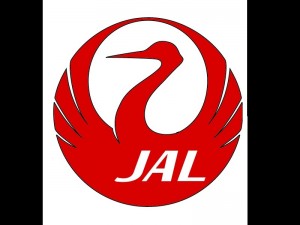TOKYO—Japan Airlines, which just two and a half years ago went bankrupt in one of the country’s worst corporate failures, said Thursday first-quarter net profit more than doubled to 26.9 billion yen ($342.75 million).
The airline credited cost cutting and improved productivity for the result, which is up from a 12.7 billion yen net profit a year ago, and said sales rose 12.5 percent to 286.7 billion yen.
The revenue boost was helped by a spike in international flights “in response to robust travel demand prompted by the strong yen,” it said.
While the surging value of the yen has hurt the nation’s manufacturers it has had a positive effect on airlines as it also means relatively cheaper travel for Japanese going overseas.
Japan Airlines earlier this year said it had ordered 10 new Boeing 787 Dreamliner aircraft as it looks to build on its recovery and fight off the threat from an emerging budget sector.
The announcement, part of a five-year plan, is in addition to an existing order for 35 of the planes.
Built largely with lightweight composite materials, Boeing says the Dreamliner is about 20 percent more fuel-efficient than similarly sized aircraft and is the first mid-size airplane capable of flying long-range routes.
“JAL took delivery of the revolutionary 787 Dreamliner this past spring, and in April, and used it to launch a new nonstop service between Tokyo and Boston,” it said in a statement Thursday.
“The mid-sized Dreamliner was also introduced on several existing international routes to adjust capacity with demand and to improve product appeal,” it added.
Sales from domestic operations also improved as the market recovered from slumping demand after last year’s quake and tsunami disaster in Japan, it said.
The carrier kept its annual forecast unchanged, expecting a net profit of 130 billion yen in the fiscal year through March 2013.
In March last year, the company exited bankruptcy, more than a year after a spectacular collapse that prompted a government bailout of the once-venerable flag carrier.
The airline went bust in January 2010 with staggering debts of about 2.32 trillion yen but continued flying during its rehabilitation process, which included massive job and route cuts.
The airline underwent an aggressive cost-cutting plan guided by charismatic businessman Kazuo Inamori, who was brought in by the government to help turn the firm around.
Japanese media have reported that JAL, which was forced to delist from the Tokyo Stock Exchange, plans a return to the market in September.
Japan’s major airlines were behind global players in terms of entry into the low-cost sector, but JAL’s main rival All Nippon Airways (ANA) last year set up budget airline Peach Aviation with a Hong Kong investment fund.
It was followed by JAL’s tie-up with Australia’s Qantas which launched Jetstar Japan, while AirAsia Japan – a joint venture between ANA and Malaysia’s AirAsia – has also launched its lower-cost service.
